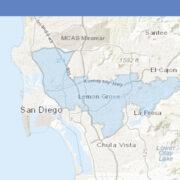BEING a monsoon country, the Philippines is visited by at least 20 typhoons in a year. Aside from that, even without an actual storm, rainfall can dump a month’s worth of rain in less than 24 hours.
Just this week, Metro Manila and other provinces in Luzon were submerged as rains continued to pour. It was not a typhoon, but a low-pressure area being pulled into the Philippines in the wake of Typhoon Gener.
Many feared that it would be a repeat of Typhoon Ondoy (International name: Ketsana), which killed more than 1,000 people and displaced hundreds of thousands in 2009.
Still, the administration and various agencies weathered through this recent calamity by implementing most of its programs that were started after Ondoy’s wrath. The Philippine Atmospheric Geophysical and Astronomical Services Administration (PAGASA) is still working on a hazard map for Luzon and Metro Manila, and has come up with a new color-coded warning system – yellow for heavy rain, orange for intense rain and red for more than 30 millimeters of rainfall per hour.
Most cities have become more aware of the course of action to take, in case floodwaters spike to dangerous levels, by warning people ahead of time about evacuation, safety and supply preparation. However, there is more to just mobilizing people and making sure that they have food and clean water.
According to the United Nations, 35 percent of Manila’s residents live in the slums. They live in places that are not suitable for habitation. One of the most important things is to have local governments and/or cities analyze their land to map out risk areas and improve building structures. Also, a strict reminder that what we dump into our waterways goes back to us.
Disasters not only cost lives, they also have a severe socio-economic impact on the country. The argument that we don’t have enough funds or resources to put into disaster preparedness is unacceptable, because we do not have the money to spare for damages the country incurs either. In essence, it is more cost-effective to be prepared than deal with damage, deaths and rebuilding.
Natural disasters are inevitable – whether it is massive flooding from super typhoons, volcanic eruptions or earthquakes. Also, given the Philippines’ geographical location in the Pacific Ring of Fire, it is prone to all sorts of natural disasters.
The recent flooding in the Philippines has proven some gains in our disaster preparedness, but still highlighted weaknesses in areas that need to be improved.
As much as climate change has something to do with the weather, we should realize that flooding is man-made. With this, we all have a duty to do our part in preparing for the worst – be it more effective flood control, reduction of trash dumping or moving people to safer ground.
(AJPress)




